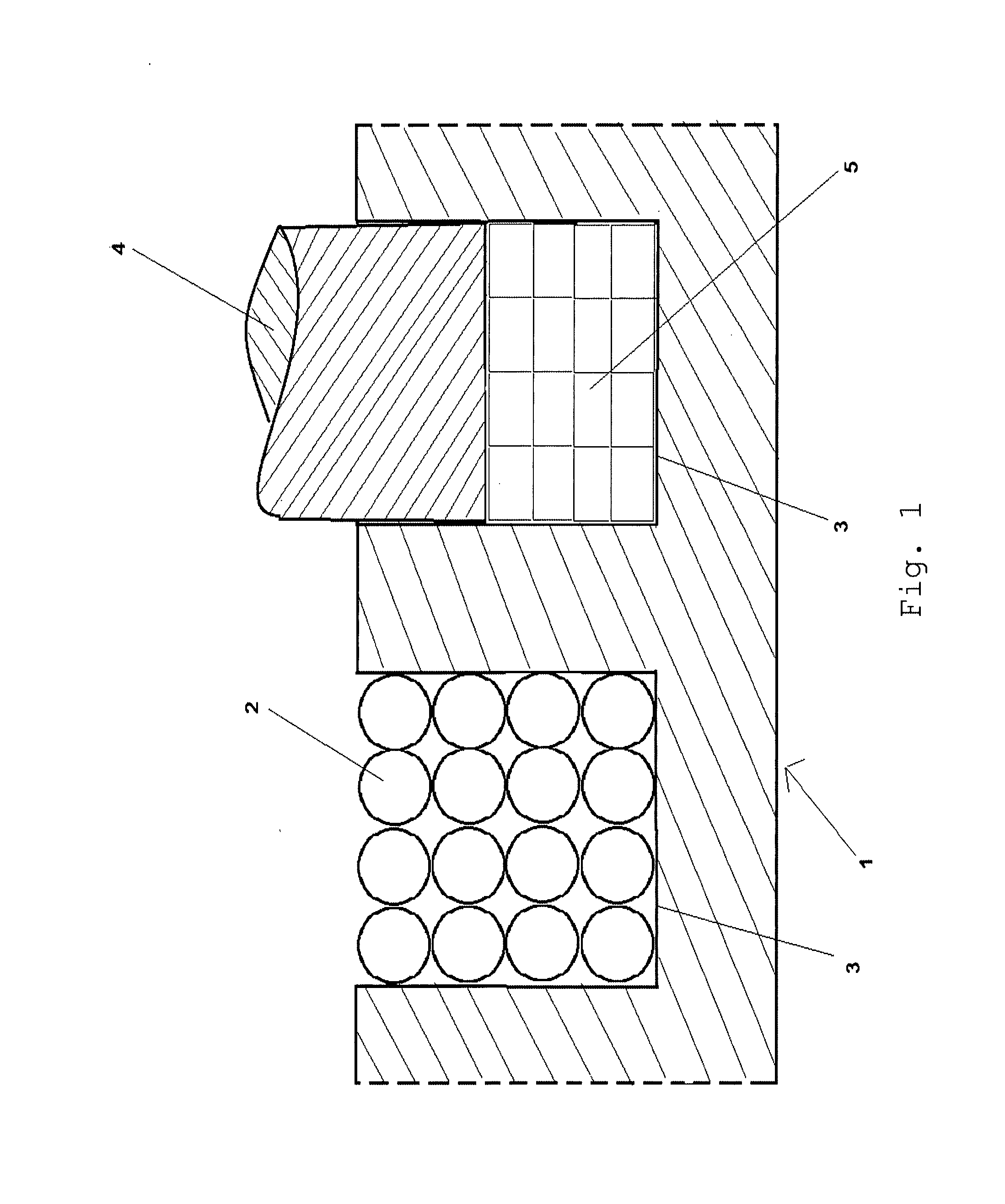Electrically ignitable caseless propellant charge, the production and use thereof
a propellant charge, electric ignition technology, applied in the direction of nitrated explosive compositions, non-explosive fillers/gelling/thickening agents, explosives, etc., can solve the problems of relatively complex structure of known propellant charges of similar forms, relatively complicated cases, etc., to improve compressibility, improve flow behaviour, and increase storage stability
- Summary
- Abstract
- Description
- Claims
- Application Information
AI Technical Summary
Benefits of technology
Problems solved by technology
Method used
Image
Examples
example 2
Ignition of a Propellant Charge According to the Invention
[0055]In the case of a tablet 6×6 mm, the energy released after ignition with 100 to 110 volts was about 300 to 350 J.
example 3
Climatised Storage Tests with Propellant Tablets According to the Invention
[0056]Propellant tablets according to the invention were subjected to dry storage at 20° C. and 50% relative humidity until the weight was constant. They could be ignited properly with an ignition voltage of 100-110 volts.
[0057]The following water absorption is observed with a propellant charge from Example 1 at the temperatures and relative humidities indicated:
DaysWatersinceWeightRelativeabsorptionstart ofTime of(g)TemperaturehumidityTablets(% bystorageday5 items° C.(%)Ø mm Xweight)010:001.342047.786.706.000310:001.356549.587.006.001.0847410:071356549.387.006.021.08474 items1.0791509:504 items49.487.106.021.48311.0834610:204 items49.286.606.031.33491.0818709.574 items49.186.906.031.25151.0809
[0058]The propellant tablets are therefore stable towards even elevated humidity and can be stored even at sub-tropical humidities.
example 4
Propellant Charge Containing Carbon Fibres and Silicic Acid
[0059]Propellant charges having the following composition are produced analogously to Example 1:
SubstanceWeight (g)Weight (%)Potassium chlorate36.015.378Manganese(IV) oxide3.6 1.538Carbon fibres (fibre length2.6 1.111average 0.25 to 0.35 mm R&GFaserverbundwerkstoffe GmbH,Waldenbuch, Germany))Alder buckthorn charcoal8.0 3.417(particle size primarily inthe range from 0.02 to0.05 mm)Acrylic granules1 particle4.0 1.709size 200-400 μmZinc peroxide (50-60%)43.018.367Sipernat D1021.5 0.641Nitrocellulose E 3302 with73.031.11835% by weight ethanolIsooctane28.011.960Acetone28.011.960Graphite powder (particle6.4 2.734size predominantly in therange 0.05 to 1 mm)Total:234.1(100)
PUM
| Property | Measurement | Unit |
|---|---|---|
| ignition temperature | aaaaa | aaaaa |
| particle size | aaaaa | aaaaa |
| particle size | aaaaa | aaaaa |
Abstract
Description
Claims
Application Information
 Login to View More
Login to View More - R&D
- Intellectual Property
- Life Sciences
- Materials
- Tech Scout
- Unparalleled Data Quality
- Higher Quality Content
- 60% Fewer Hallucinations
Browse by: Latest US Patents, China's latest patents, Technical Efficacy Thesaurus, Application Domain, Technology Topic, Popular Technical Reports.
© 2025 PatSnap. All rights reserved.Legal|Privacy policy|Modern Slavery Act Transparency Statement|Sitemap|About US| Contact US: help@patsnap.com


